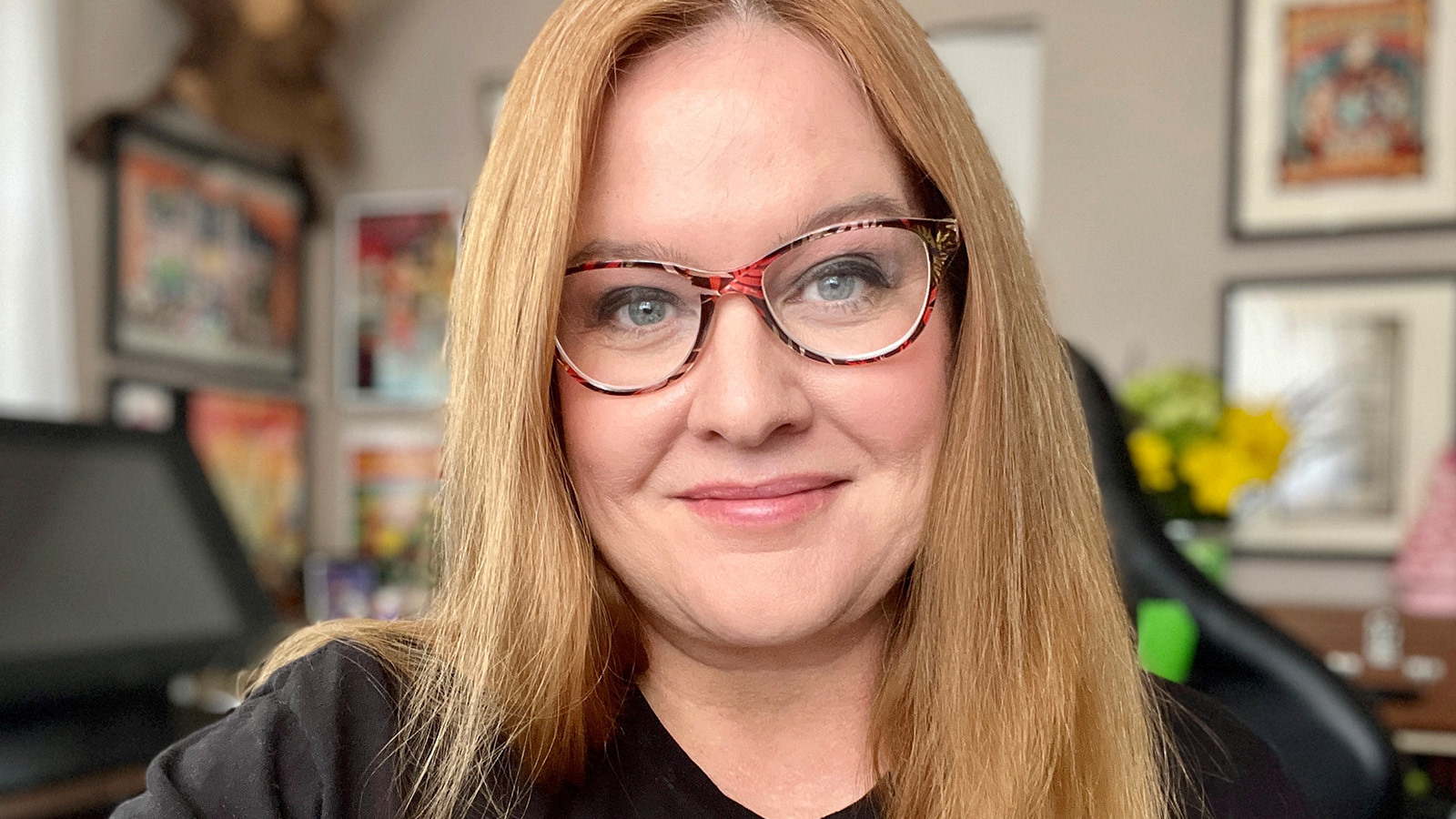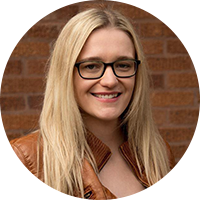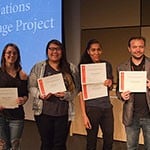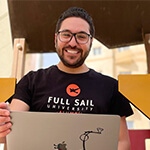Full Sail Stories
Published Jul 10, 2023
Faculty Spotlight: Amy Williams (Lab Specialist, Graphic Principles I & II – Graphic Design)
Graphic Design lab specialist Amy Williams teaches her students about concept art, the production process, and how pivoting their design skills can broaden their prospects.

For Graphic Design lab specialist Amy Williams, successful design is all about adapting. Her degree in Illustration from Ringling College of Art & Design focused on paper-and-pencil illustration, but she translated those foundational skills to digital design as she entered the workforce. Today, Amy uses her experience designing props, creating video game art, and working with freelance clients to show her students the importance of adaptability.
One of Amy’s first jobs was freelance prop work for movies and television shows. She created prop paintings for the Hallmark movie Clover, made police badges for Instinct starring Anthony Hopkins, and designed prop concept sketches for Tom Hanks to use in the HBO miniseries From the Earth to the Moon. After a few years of freelancing, Amy started looking for more consistent work and applied to a video game company called n-Space in Orlando.
Working for n-Space meant that Amy had to take her physical concept art and turn it into digital assets. Since it was the early days of digital art, Amy had the opportunity to work with low resolution designs and grow her skills as the industry changed. She contributed to a series of successful Mary-Kate and Ashley games for PlayStation, as well as Rugrats games and some first-person shooters. Amy discovered that she loved the digital side of design and enjoyed working with software to apply skins onto 3D models for terrain and video game characters.
“I adapted pretty quickly because I had that base knowledge from art and design school. I found that all the rules and principles adapted to whether I'm doing movie props or video games, doesn't matter. I was able to adapt,” she recalls. “By the end of it, I was doing every stage of production… The last year I was [at n-Space], I was doing concept art and model building, but terrain building was more of my thing. I like to be the world-building type person.”
Amy teaches the importance of world-building and concept art in her Graphic Principles I and Graphic Principles II classes. Concept art is one of the first steps in the design process – it determines the look of an entire project. Designers will use techniques like world building, thumbnail sketches, and storyboarding to decide on a direction with their client, then take the concept and run with it to meet the client’s needs.
Amy’s also used her background in concept art to create an additional weekly workshop for students who are particularly interested in the process.
“I basically talk about all the [concept art] stuff that I've done in the past and what other people do in that part of production… We talk about storyboarding, we talk about just concept sketches, brainstorming. Sometimes we're not even drawing, we're just talking to each other and sharing ideas. And sometimes we're up at the whiteboard in the front of class and we're all scribbling and coming up with ideas and notes and things. And it turns into a really good creative jam session,” she says.
Recently, Amy has called on her varied background to create diverse designs for multiple clients. She’s built educational materials featuring original superheroes and villains for statistics students, designed Florida-themed versions of Salesforce’s animated characters for the community-led Salesforce conference Florida Dreamin’, and worked on a few other projects that are currently under wraps. She says that being able to adapt to different projects can make all the difference when designers are looking for a steady stream of work.
“You have to pivot your style with every project that comes your way. I want to say yes to projects. I don't want to say, ‘No, that's not my style. That's not what I do’… I'm a commercial artist. I have to appeal to the brand, I have to appeal to the masses, I have to appeal to the client, I have to appeal to my boss,” she says.
“And I think that's my biggest piece of advice to all of our students, is don't get locked up in your own personal ego. I'd rather find out what you're not good at – what do you hate? If you hate Illustrator, let's work on it. Because I'd rather when they graduate, they say yes to projects. They may hate doing logos, but at least they know they can do it. I think that's the biggest thing I've learned over the years, is just knowing how to pivot, change styles, change mediums, whether it's 3D or on paper.”



